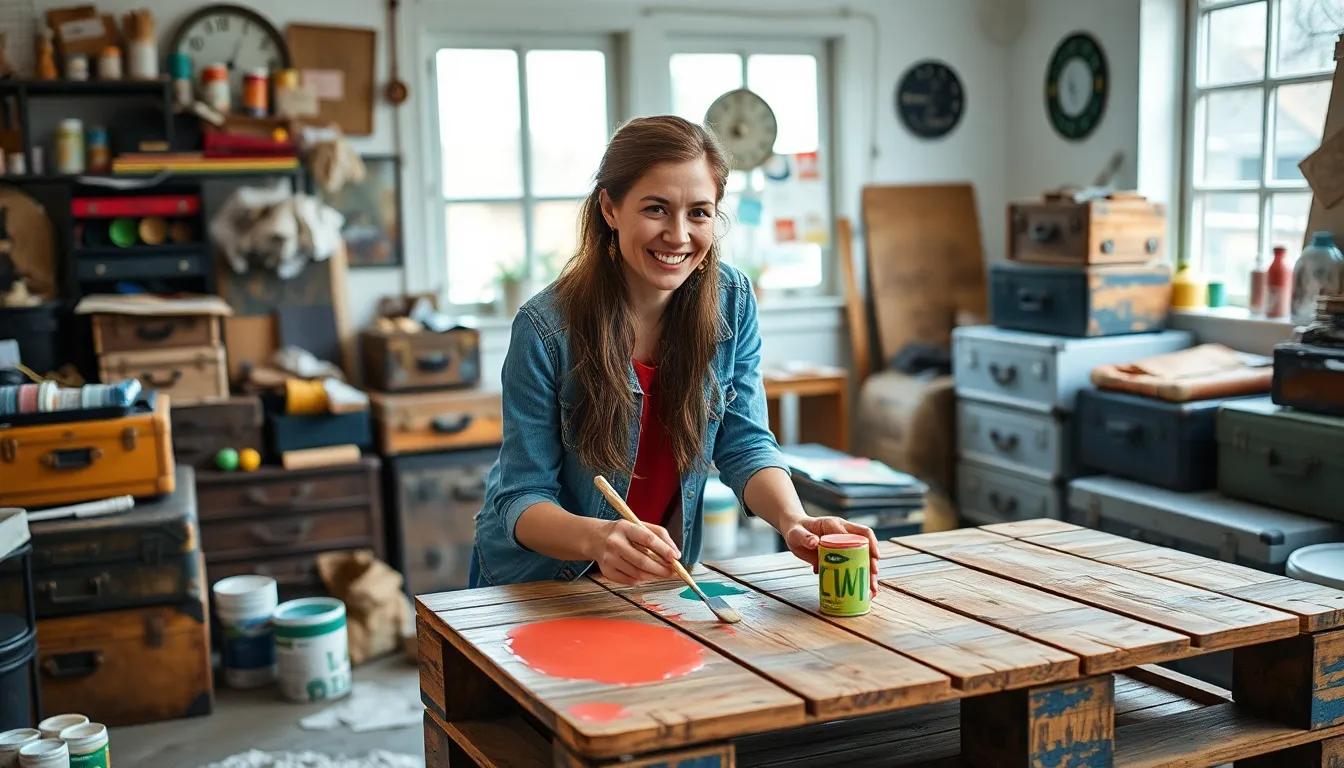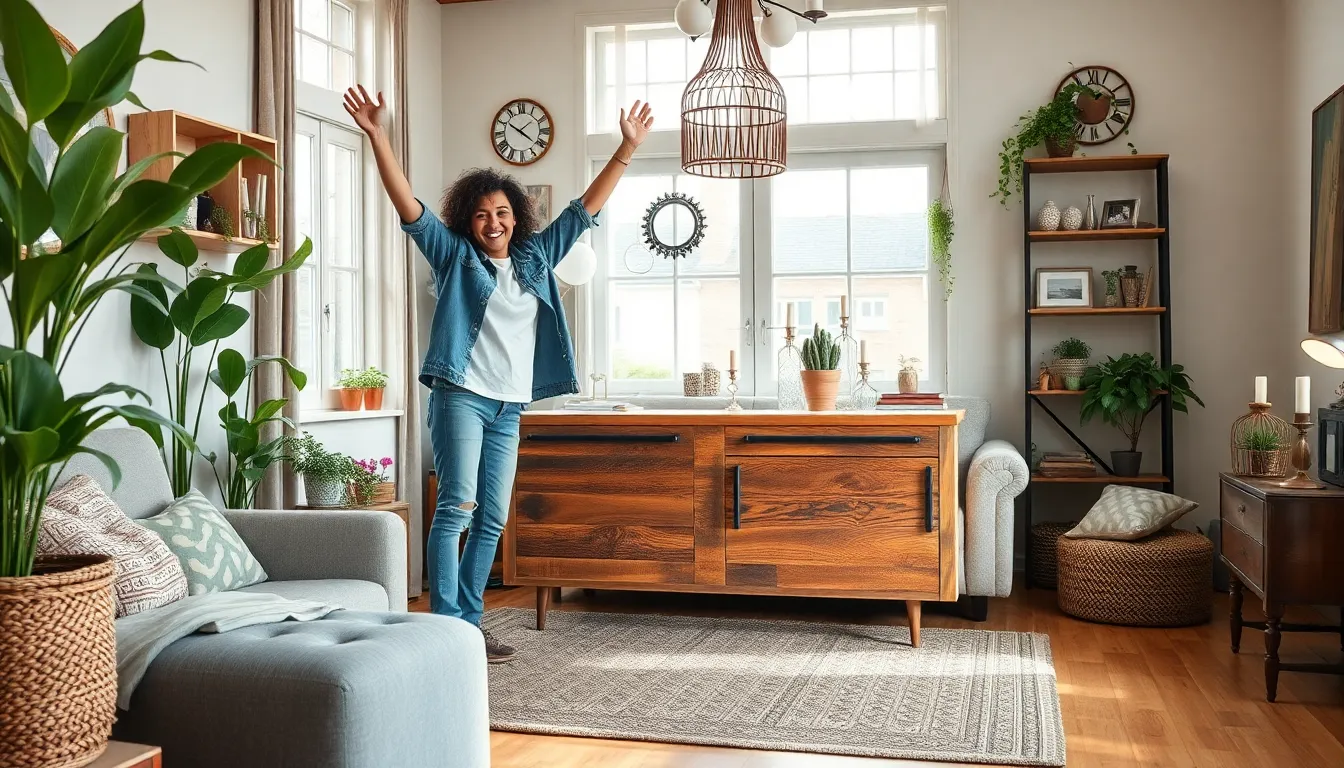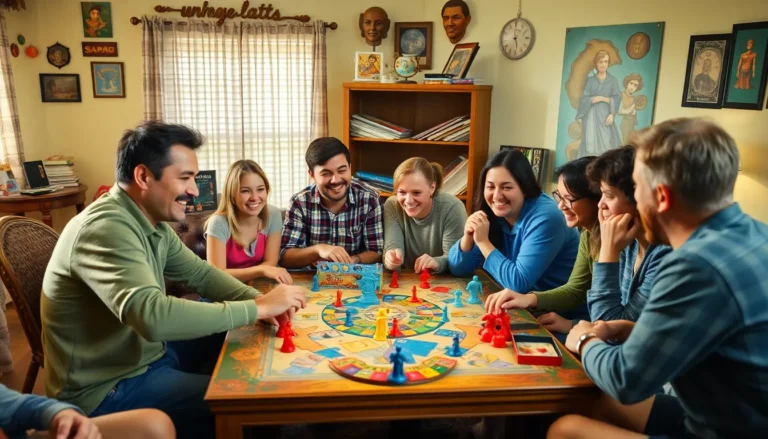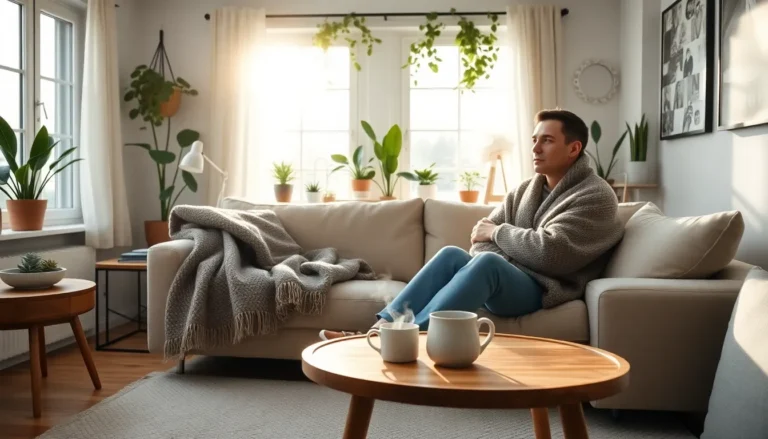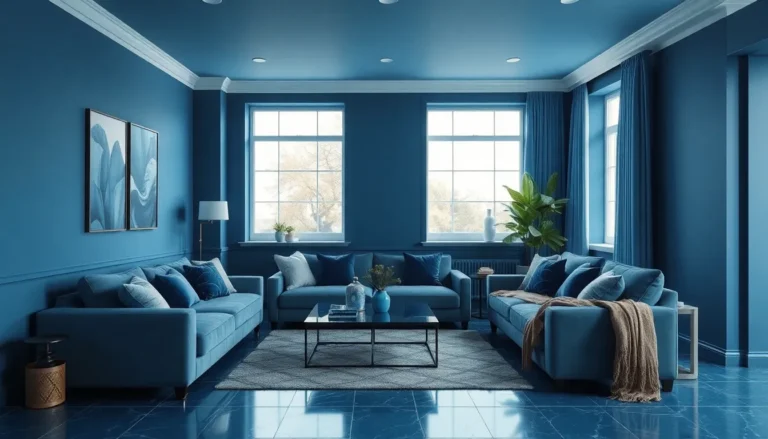Table of Contents
ToggleIn a world where mass production reigns supreme, upcycled furniture is the rebellious hero we didn’t know we needed. It’s like giving a second chance to those tired old pieces that have stories to tell, and let’s be honest—who wouldn’t want a coffee table that’s seen more adventures than they have? With the rise of eco-conscious living, upcycled furniture trends are transforming homes into unique sanctuaries that scream personality.
Picture this: a vintage suitcase turned into a chic side table or a wooden pallet transformed into a stunning garden bench. These innovative ideas not only reduce waste but also add charm and character to any space. As more people embrace sustainability, upcycled furniture is becoming the go-to choice for those looking to make a statement without sacrificing style. So, let’s dive into the world of upcycling and discover how to turn yesterday’s junk into today’s treasures.
Overview of Upcycled Furniture Trends
Upcycled furniture trends showcase creativity and sustainability in design. Transformative practices allow homeowners to reimagine not only aesthetics but also functionality. Popular items often include vintage suitcases and disused wooden pallets, which are creatively converted into unique coffee tables and decorative storage solutions. Crafting bespoke pieces injects personality into living spaces while promoting eco-friendly choices.
Innovative techniques continue to emerge, drawing attention to new materials and styles. Pallet furniture, for example, remains a favorite due to its rustic appeal and versatility. Antique furniture pieces gain new life through paint, polish, and modern upholstery, attracting those desiring vintage charm with contemporary flair.
The rise of DIY workshops and social media platforms fosters community engagement around upcycling. Through platforms like Instagram and Pinterest, individuals share their projects, inspiring others to explore upcycled options. Visual storytelling strengthens the appeal of upcycled furniture, making it a popular choice for interior design enthusiasts.
Environmental awareness contributes significantly to this trend, as more consumers seek sustainable alternatives to mass-produced items. Upcycling clearly addresses waste reduction while offering stylish solutions for modern living. Overall, upcycled furniture not only enhances decor but also reflects a conscious lifestyle choice.
Current trends indicate a shift toward multifunctional pieces, such as benches that double as storage units, improving space efficiency. By incorporating upcycled furniture, individuals make statements about their values while enjoying the distinctiveness of their interior design.
Benefits of Upcycled Furniture
Upcycled furniture offers numerous advantages beyond aesthetics. This section explores the key benefits of opting for these sustainable pieces.
Sustainability and Environmental Impact
Sustainability stands at the forefront of upcycled furniture trends. By repurposing existing materials, individuals contribute to waste reduction and lower demand for new resources. Each item transformed into functional furniture helps divert waste from landfills, promoting a circular economy. This practice reduces carbon footprints associated with manufacturing new items. Choosing upcycled options reflects a commitment to an eco-friendly lifestyle, aligning with growing consumer awareness about environmental issues. Current data shows that over 80 million tons of furniture waste ends up in landfills annually. Opting for upcycled pieces significantly mitigates this alarming statistic by increasing the longevity of materials.
Cost Efficiency
Cost efficiency makes upcycled furniture an appealing choice for budget-conscious homeowners. Transforming old pieces typically requires less financial outlay than purchasing new designer items. Individuals can acquire materials at low costs from thrift shops or repurpose items they already own, lowering overall expenses. Many upcycled projects yield high-quality results at a fraction of typical retail prices. Studies indicate that upcycled furniture can save consumers up to 50% compared to buying new. This affordability not only aligns with smart budgeting but also offers opportunities for creativity and personalization without breaking the bank.
Popular Upcycling Techniques
Upcycling techniques provide diverse methods for transforming discarded furniture into stunning pieces. Below are two popular techniques that showcase creativity and sustainability.
Painting and Finishing
Painting adds a fresh look to outdated furniture. Many choose chalk paint for its matte finish, enabling a vintage vibe. Finishing with a sealant protects surfaces while enhancing durability. Some homeowners opt for a distressed look by sanding areas after painting. This technique highlights furniture’s character and depth. Bright colors can make a bold statement, while muted tones may create a calming space. Trends also indicate the use of stencils to add unique designs, personalizing each piece and elevating home decor.
Repurposing Materials
Repurposing materials contributes greatly to the upcycling movement. Old doors often find new life as headboards or tables, adding charm to bedrooms and dining areas. Wooden crates can transform into creative storage solutions or nightstands. Vintage items such as suitcases become stylish side tables or decorative pieces. Additionally, disassembled pallets offer opportunities for coffee tables or garden benches. Many enthusiasts blend different materials for eclectic designs, making unique statements. This technique reflects individual style while addressing waste reduction consciously.
Design Inspirations for Upcycled Furniture
Upcycled furniture flourishes with creativity and style, offering diverse design inspirations that resonate with personal aesthetics.
Vintage Aesthetic
Vintage aesthetics charm homeowners looking to enhance character in their spaces. Turning old suitcases into stylish coffee tables captures nostalgia while providing functional storage. Transforming mid-century chairs into vibrant seating options allows for a unique touch that stands out. Distressed wood finishes evoke an old-world charm, appealing to lovers of rustic interiors. Combining colorful paint and vintage hardware creates distinctive pieces that tell a story. These transformations breathe new life into forgotten items, making every piece feel special in a stylish way.
Modern Minimalism
Modern minimalism emphasizes clean lines and functional forms in upcycled furniture designs. Repurposing pallets into sleek benches aligns with this aesthetic, blending simplicity with sustainability. Choosing neutral color palettes keeps the focus on the craftsmanship and the materials used. Transforming wooden crates into functional shelving maximizes space while maintaining a minimalist feel. Integrating metal accents can add an industrial touch, enhancing the modern vibe. Minimalist upcycled pieces support a clutter-free environment while showcasing individual creativity and eco-conscious choices.
DIY Upcycling Projects
Creating unique pieces through DIY upcycling projects stands at the forefront of sustainable design. Vintage suitcases can transform into stylish coffee tables that capture attention. Decorative storage solutions emerge from old wooden pallets, offering both functionality and aesthetic appeal.
Incorporating techniques like painting refreshes outdated furniture, allowing for personal expression. Bold color choices and artistic finishes can completely reinvigorate a tired piece. Reupholstering chairs with vibrant fabrics breathes new life, providing not just comfort but style.
Repurposing materials offers another exciting opportunity. Old doors, for example, can serve as statement headboards. Wooden crates find new purpose as versatile shelving units, enhancing both utility and decor.
Innovative projects extend to creating bespoke lighting fixtures. An old bicycle wheel can morph into a funky chandelier, becoming a conversation starter. Meanwhile, wine bottles can act as stylish vases, infusing spaces with creativity and charm.
Many online platforms offer tutorials and inspiration for DIY enthusiasts. Social media channels frequently showcase completed projects, encouraging others to try their hand at upcycling. Community workshops also provide hands-on experiences, fostering collaboration and enthusiasm among participants.
Initiating a DIY upcycling project typically requires minimal tools and materials. Basic items include sandpaper, paint, and screws, making the approach accessible for beginners. Transforming unwanted furniture not only reduces waste but also supports a mindful lifestyle.
Finally, these projects reflect personal values while enhancing home environments. Engaging in upcycling challenges individuals to think creatively and sustainably. Each piece tells a story, demonstrating the beauty of reimagining the old into something new.
Conclusion
Upcycled furniture trends represent a significant shift towards sustainable living and creative expression. By transforming discarded items into stylish and functional pieces, individuals can make a positive impact on the environment while enhancing their home’s aesthetic. This movement not only fosters creativity through DIY projects but also promotes community engagement and resourcefulness.
As more people embrace the charm of upcycled designs, it’s clear that this trend is here to stay. Homeowners can enjoy the benefits of unique furnishings that reflect their personal style while contributing to a more eco-conscious future. With endless possibilities for transformation, upcycled furniture continues to inspire and innovate in the world of interior design.

